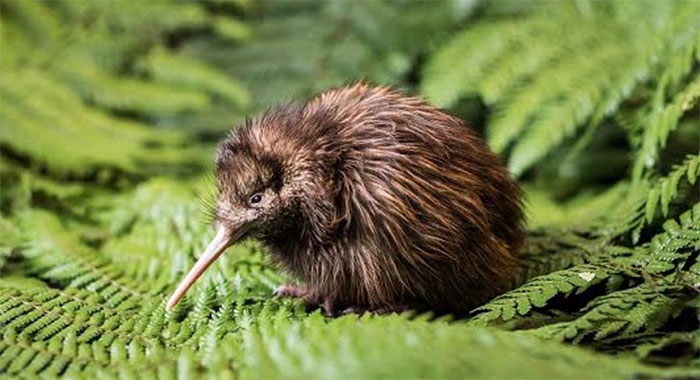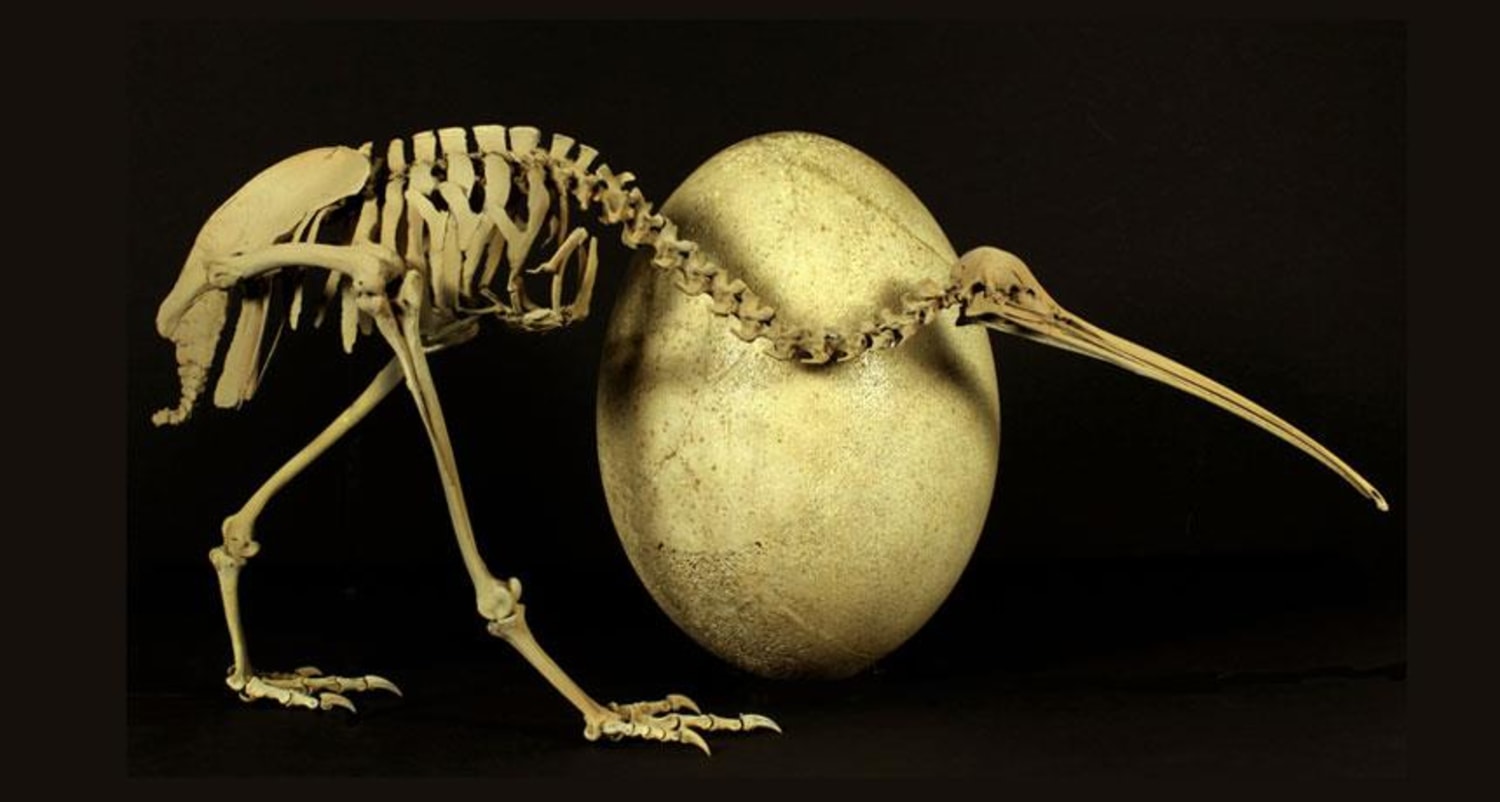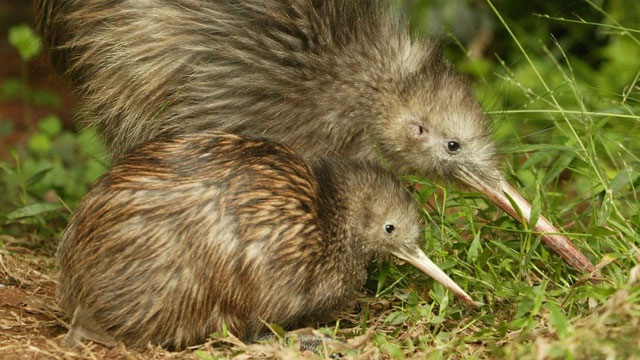Trust me guys. We kiwis are the “superbirds” of the bird world.
Hello! I am a kiwi bird.
For those who don’t know what a kiwi is, let me just say that I am the mascot of New Zealand. Why they consider me a mascot is unclear, but I believe that we truly deserve that title.
Because kiwis are an extremely special species, which you will never expect.
1. I have wings, but they are the “weirdest” wings in the bird world

There are more than 10,000 species of birds on this earth, only 60 of them cannot fly. Among them, there is my kiwi.
Because I don’t know how to fly, right from the moment I opened my eyes, my body was equipped with everything to know how to run as fast as possible. For example, I hatch very quickly, and my belly will be filled with egg yolks so I can live without food for at least 2 and a half weeks. The faster we know how to run, the higher our survival rate will be.
And because I couldn’t fly, my wings also evolved to… disappear. But I still have wings, they’re just the smallest and most deformed in the bird world.
2. Our mothers are real “superbirds”.

Our kiwi family is small, cannot fly, looks gentle and seems… harmful. But let me tell you, we are a resilient species after all, especially female kiwis.
The resilience I want to talk about here is the story of birth. Because our eggs are one of the largest in the bird world in terms of body proportion. Like my egg, it accounts for more than 25% of my mother’s weight.
Our kiwi family is small, only the size of an industrial chicken. But our eggs are 6 times bigger than chickens. By comparison, it is equivalent to a human woman having to give birth to a child weighing nearly 18kg, not including amniotic fluid.
That said, our mothers are truly superbirds!
3. They have blind eyes but in return they have the best hearing in the bird world

We kiwis are nocturnal, but to be honest, whether it’s night or day, our eyes are blurry and we can’t see anything.
But in return, my nose is better than other birds. Apparently it’s because I have more smell receptors in my nose than in the rest of the world. Well, if the world wins its nose, it loses its eyes, let’s accept it.
4. My name has its own writing rules!

Remember, when mentioning my name, never write “Kiwi” with a capital “K” . That’s the common name for people who “share the same hometown” as us in New Zealand (New Zealand is a Kiwi country).
And we are “kiwi”, remember!
5. Don’t ever think you can trick us

Even though I can’t compare with the giant parrots and crows, I’m also proud that kiwis have an excellent memory.
If I remember correctly, humans once tried to trick us with speakers that recorded our fellow humans’ voices. But only succeed the first time. Next time, we remember how the speaker sounds and will never be fooled again.
In addition to the above, here are some very adorable facts about this bird:
1. Kiwi birds are nocturnal, they love to forage at night.
2. Kiwis are the only birds in the world with nostrils located outside their beaks. This helps them smell better when looking for worms to eat!
3. Kiwi birds have very smooth feathers. Their hair-like feathers help them easily camouflage themselves in the forest. That also makes them more adorable.
4. It’s very rare for kiwis to be born completely white, this is due to a recessive gene – not at all like albinism, but still super cute.
5. One of the biggest natural predators of kiwis is the Skunk, a member of the Skunk family, who loves the taste of kiwis. Kiwi birds are very loyal birds.

6 . Because of its many differences from other birds, the kiwi is sometimes called an “honorary mammal”.
7. Maori people in New Zealand often hunt kiwis for their meat and soft feathers, but only on very important occasions, because they believe that kiwis are protected by the Forest God Tane Mahuta.
8. Kiwis are very loyal – they usually only have one mate for 20 years or more!
9. Their scientific name is “Apteryx” or in Japan “kiwi-Chan”.
ten . Kiwi eggs are 65% yolk. This helps provide baby kiwi birds with enough nutrients to develop feathers after hatching and live independently.
11. Images of the kiwi are used in many cultural areas of New Zealand, from coins to candy and even their Air Force emblem. Yes, a flightless bird is the symbol of the Air Force.
twelfth . There are five species of kiwi: brown kiwi, great-spotted kiwi, little-spotted kiwi, Rowi and Tokoeka. Rowi is the rarest species, with only about 450 remaining in New Zealand today.
13 . Kiwis are raptors, their closest relatives are elephant birds from Madagascar. Kiwi weighs 1-2 kg when mature. It is estimated that only 5% of baby kiwis survive to adulthood.

14. There are currently about 68,000 kiwis left in New Zealand. They are an endangered species. New Zealand has established many kiwi reserves and breeding programs across the country. It is estimated that only 5% of baby kiwis survive to adulthood.
15 . There are over 20 kiwi sanctuaries across New Zealand that you can visit and see kiwis. Kiwi has the smallest beak in the world. The kiwi’s nostrils are located right at the end of the beak.
16. How the kiwi got to New Zealand remains a mystery. There are three main hypotheses: First, the kiwi’s ancestors existed when New Zealand separated from Antarctica and Australia 60 million years ago. The second hypothesis is that when the mainland broke up, kiwis went from island to island, eventually reaching New Zealand. Third, the kiwi’s ancestors flew from island to island to reach New Zealand.
17. Kiwi birds can live up to 50 years old.






